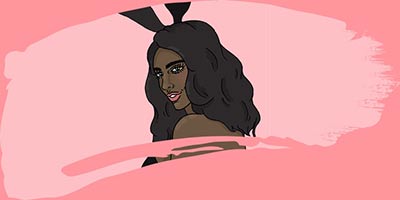babe •
‘That’s where I had my abortion’
A clinic can close, but women don’t forget
by
It’s mid-June and oppressively humid in Toledo, and I am looking out at the patch of nothingness that was once the most high-profile abortion clinic in my hometown.
In its day it withstood firebombs, an Anthrax threat, and hundreds of protesters, whose visits were regular and hostile. Then in 2013 the people who wanted to shutter this place got their way, when an anti-abortion law made its future unviable. Now they are building a monument to their victory: Hope Park, a “Memorial to the Unborn.” Welcome to Ohio, where our generation’s War On Women has already been won.
A female family member stands behind me while I take photographs, like I am some sort of twisted tourist. As we get back into the car, she wonders aloud what that nothingness once was.
“The Center for Choice,” I tell her.
She nods her head once before fiddling with the dial on the AC and we slip into the kind of silence that often occurs before an unexpected admission.
“That’s where I had my abortion,” she says, staring blankly ahead at the afternoon traffic.
“Who with?”
Her now-husband, she says. I never knew. No one did. Except for the men and women who worked at the place that is now a wasteland.
She agreed to tell me the story for the third part of my series on the restriction of women’s abortion rights in Ohio.
***
It’s 1986 and she is in her mid-twenties. She is in a healthy, committed relationship with a man who loves her in a way she has never felt before. She is pregnant.
She is happy.
The man who is now her husband though, is not. Because to his family becoming pregnant before marriage is synonymous with an immoral act. She is begged to have an abortion and she does because she loves him.
Days later she calls in sick to work and accompanied by a friend, enters the Center for Choice. In the waiting room she observes the women of the waiting room. They are black and white. Young and old. Wealthy and poor. Stoic and sentimental.
Patient advocates, like Sue Postal, take her and two others into a room where they make sure they understand the full weight of their decision. They present them with options like an open adoption. Each woman refuses. They are sure.
She is left to wait for what feels like an hour before being ushered into a room with a nurse and a different patient advocate. A doctor enters soon after. Her friend holds her hand and weeps with her as he places each foot into a stirrup.
He looks to her for confirmation that this is OK before manually dilating her cervix with two cold metal rods.
Cramping ensues. She is in labor. But she is sure.
For five moments there is suction between her legs. Her fetus is forcibly removed.
She is taken home by her friend and waits for a call from her husband. He is too busy to spend time with her that weekend. She sits on a couch, swallowed whole by her own grief.
Years pass and she is married. She raises children that are healthy and successful. She is still in love. She lives a life that is more fortunate than most.
But every day she wonders what that child could have become. What would they look like? Would they be kind like her first child? Or full of fire like her last? Occasionally those questions become arguments. Her husband claims he shares her sorrow. But how could he? He wasn’t there.
And now, suddenly, she is unsure.
***
I speak with another former patient on the phone weeks later. Her story is slightly more typical.
It’s the early nineties. She is 15 and prematurely conservative. She often argues with girls that identify as pro-choice.
One classmate tells her, “You’ll never know until you’re in that position.”
Months later and she is in that position. After weeks of deliberation, she and her long-term boyfriend decide on abortion. Together they consult Center for Choice.
Their parents don’t know. Even when she is forced to go to court to plead her case as a minor. With the help of clinic employees, she is granted permission by a judge.
She enters the clinic for her procedure and is greeted by a chorus of protesters who very much resembled her just weeks prior. Everything she had known to be true about abortion is soon proven to be false.
The women from the clinic are kind and free of judgment. They allow her to pay for her procedure in installments and she becomes a volunteer.
She is graduating from high school and for her senior project, conducts a presentation on her work with the center before a panel of school faculty.
They threaten to fail her, and the clinic protests on her behalf. Instead, she receives the first C of her academic career.
In 2001, she is the youngest woman ever to be hired at the clinic. She works there until they close.
Years later, she finally tells her own mother about her abortion. She weeps for an opportunity to be there for her daughter long lost.
“But I had the clinic, Mom. I was never alone.”
Today she has a seven year old daughter of her own, and not one regret.
When the time is right, she will tell her about that first time at the clinic and every memory with her makeshift family thereafter.
She says she can’t wait.
***
Weeks later, I am on the phone again. This time with a woman in Chicago.
She is 45 and has had four abortions.
At the time of her first, she is 21 and her pregnancy is caused by, in her words, “human error.”
She is a chef with dreams of foreign cities, and professional growth and a life that allows for her to be utterly selfish. She is not in love. She never wants children.
On the day of her procedure, a friend asks to accompany her. She allows it, but assures her she will not need her support.
She enters the Center for Choice. She is frightened. Not of the procedure but of the grief she has been repeatedly promised will ensue immediately afterward. It never does.
That night she goes to work as if it were any other shift.
The following week she has dinner with her mother and mentions her procedure. Her mother is not shocked nor overly emotional. Instead, she chooses to speak of her own abortion for the first time. She is as candid as her daughter.
Months pass and the pair have dinner with her mother’s mother. The youngest of the trio again mentions her procedure. Her grandmother does not contribute to the conversation until she is being driven home. She admits to her abortion several decades earlier. It was still illegal then.
“The secrets we keep,” she tells me before hanging up.
She is now a chef in Chicago, but before she moved from Toledo, she too became a volunteer at the clinic.
Her time there was the “wake-up call,” she never knew she needed. It was there she learned about feminism and diversity and the varying socioeconomic struggles that you simply cannot understand until you speak to people grappling with them.
She tells me where she believes the modern pro-choice movement has gone wrong; how they could do more to depict the reverence for the lives lost and the often internalized dithering before that decision can be made.
She is disillusioned by the center’s closing. She is frustrated that something as trivial as a transfer agreement was enough to put an end to something that meant so much to so many. And she is angry that the building was demolished before it could have been used as a facility to help women in a different way.
Again, I ask if she ever wonders what her life might be like had she carried her children to term.
“Sure, it might have been wonderful. But more than likely, it would’ve been crippling poverty.”
***
Today, it’s early September and I am speaking on the phone with my third subject. I minimize a news story on my desktop about a group of individuals who are championing a constitutional amendment that would classify abortion as aggravated murder in Ohio.
In regards to Hope Park Memorial for the Unborn, she tells me her and a few others from the center will create their own ritual of visiting in celebration of the women that were helped, who found strength and were united there. My female family member might even attend.
“They can spin it in whatever Christian direction they want, but that ground is sacred for sacrifice, for loss and for love. Both groups are honoring lives. Just from a different perspective.”











 2017 - 2024 Tab Media
2017 - 2024 Tab Media